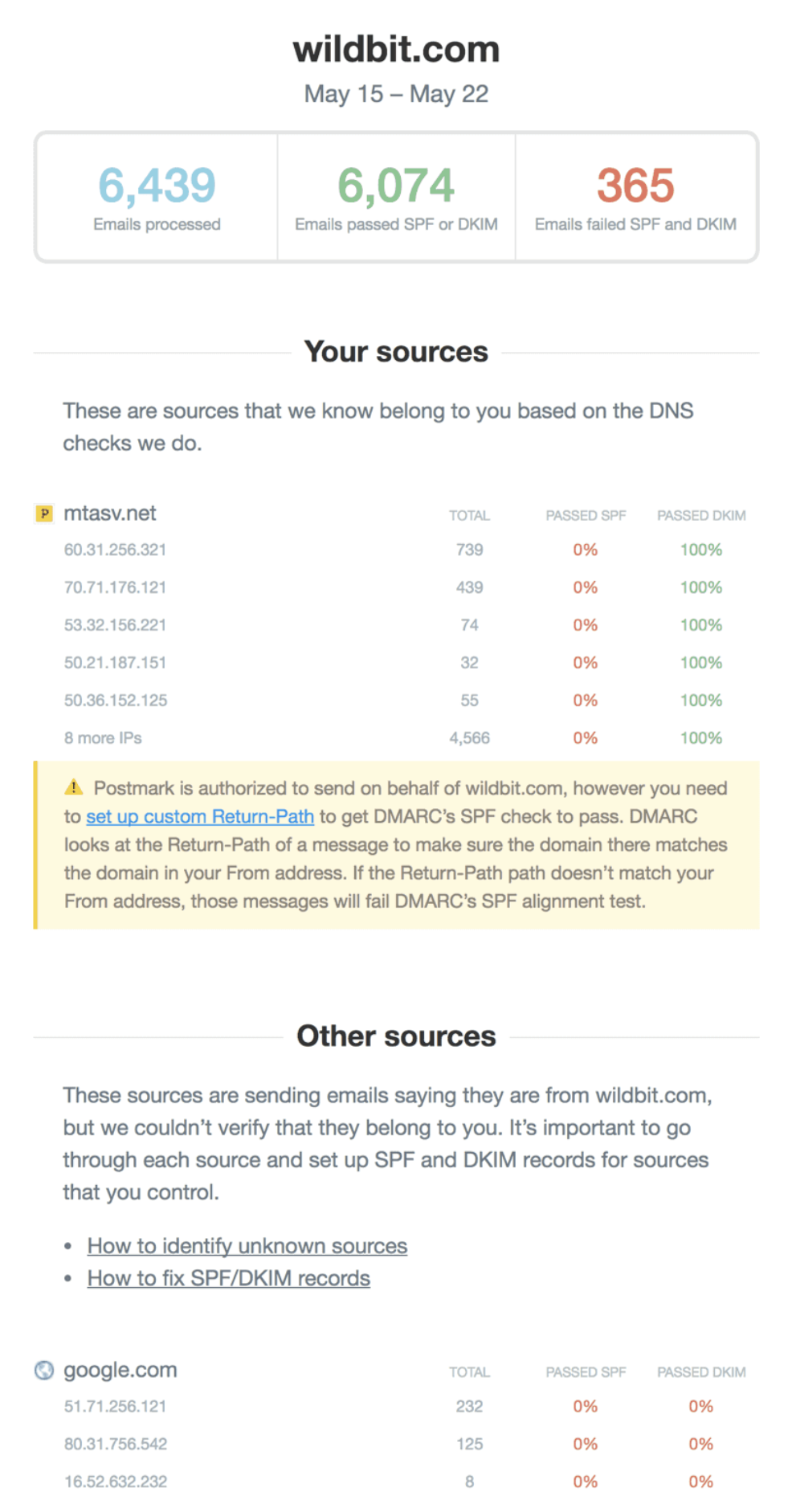Feature set
Free DMARC Weekly Digests by Postmark focuses on providing a straightforward, no-cost solution for basic DMARC monitoring. We receive a weekly digest email containing an overview of our DMARC compliance and the top 10 sending sources, each with up to 5 associated IP addresses. This provides a snapshot, enough to identify major issues without getting bogged down in extensive data.
The feature set is intentionally lean, designed for users who need general visibility into their DMARC alignment without requiring a dedicated dashboard or advanced analytics. It's a 'set it and forget it' approach, delivering essential information directly to our inbox without the need for active engagement with a platform.
MyDMARC offers a more comprehensive suite of features, even in its free tier, expanding significantly with paid plans. We get daily DMARC report parsing and 7-day data retention on the free plan, which offers more granular insight than a weekly digest alone. As we scale up to paid plans, we unlock hourly or near real-time parsing, and extended data retention.
Beyond basic reporting, MyDMARC provides a web dashboard that allows for deeper dives into our DMARC data, including full visibility into all mail sources and IPs. While still a DMARC-focused tool, its tiered structure offers a clearer path to more advanced monitoring and management capabilities as our needs evolve, providing more actionable data points directly within the platform.











































 0 / 5(0)
0 / 5(0)
 0 / 5(0)
0 / 5(0)



